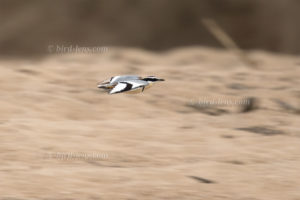 The Birdlife of West Africa was on the schedule for April 2017. I decided for the Africa specialist Rockjumper. Cameroon is a vast and diverse land; lying just north of the equator. This bird-rich nation forms the inter-grade between West and Central Africa and harbors a wide range of habitats, ranging from steamy lowland rainforest to Sahelian semi-desert.
The Birdlife of West Africa was on the schedule for April 2017. I decided for the Africa specialist Rockjumper. Cameroon is a vast and diverse land; lying just north of the equator. This bird-rich nation forms the inter-grade between West and Central Africa and harbors a wide range of habitats, ranging from steamy lowland rainforest to Sahelian semi-desert.
By combining the Rainforest & Rockfowl tour with the Northern Extension tour of the Africa-specialist Rockjumper I was confident to book a birding tour that visits all of the area’s core ecological zones and provides a thorough coverage of this West Africa birding destination in three-weeks. Due to its wealth of habitats, over 900 bird species have been recorded, and comparable tours had been successful with roughly 550 species. This is the one side. But how about bird photography – my 2nd leg of interest.
Here the guidelines provided by Rockjumper are clear: NOTE FOR PHOTOGRAPHERS: Photography is welcomed and encouraged on our tours, but please bear in mind that these are foremost birding tours and are not designed as photographic expeditions. Our focus is to obtain maximum bird and wildlife sightings, not to spend significant time photographing. Therefore we respectfully ask photographers to abide by the instructions of the tour leader when he feels that it’s in the groups’ interests to leave a sighting and move on, even if the “ultimate” shot has not yet been obtained. More ardent photographers are welcome to discuss a private tour….
And, do not think, that this is not true. Roughly 550 species in 3 weeks means a lot of travelling to all of the countries ecological zones and a tremendous pace of birding during the rest of the days.
Even if (or maybe particular so) the guide/the guides are photographing by themselves. This even leaves less time for your private photographic interests unless for sheer luck your photo subject’s preferences meet the preferences of the guides.
Normally guides are doing their job since a long time and are only interested in images of the “rare” and/or “special” birds. To these birds, time is devoted – and was devoted during this trip as well. This means photos of a Crossley’s Ground Thrush (Geokichla crossleyi) or a Cameroon Olive Greenbul (Phyllastrephus poensis) are possible: yes. Otherwise it happened that the guide recalled to above mentioned guidelines and let the driver go although the African Grey Hornbill (Tockus nasutus) was really sitting perfectly along the dirt track.
It is obvious, that in many situations you have to cope with the conflict between the interests of a group and your private interests. In the case of photography in general this means, that you should have more experience, better techniques and better equipment if you interested in making a birding trip suit your photographic standards as well. Additionally you should be physically fit for such a trip. Because if you are slow in the field, even less time can be devoted to photography.
Now to the question of better equipment. Most participants are going with Canon gear and the Canon 100-400 F4.5-5.6L IS USM in combination with a Canon EOS 7D seem to be the standard choice. A converter seems to be a must. This means that in many cases – not only in the rainforest – the viewfinder of the camera must be pitch-black. Consequently many shots are gone – or not taken at all – because you need too much time to find and focus the bird. What might be an alternative?
For the lens, the answer is easy. For various reasons the Canon 400mm f/4 DO IS USM is my actual choice. The combination of size, weight, handling and performance make for the best gear in the field although I am looking for the newer version Canon 400mm f/4 DO IS II USM. But the question is what body should be connected to the lens. The Canon EOS 5DsR?
Excellent article on a not so visited beautiful destination. I’ll use it as a reference for my next visit to Cameroon 🙂